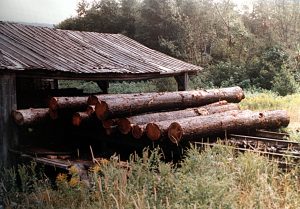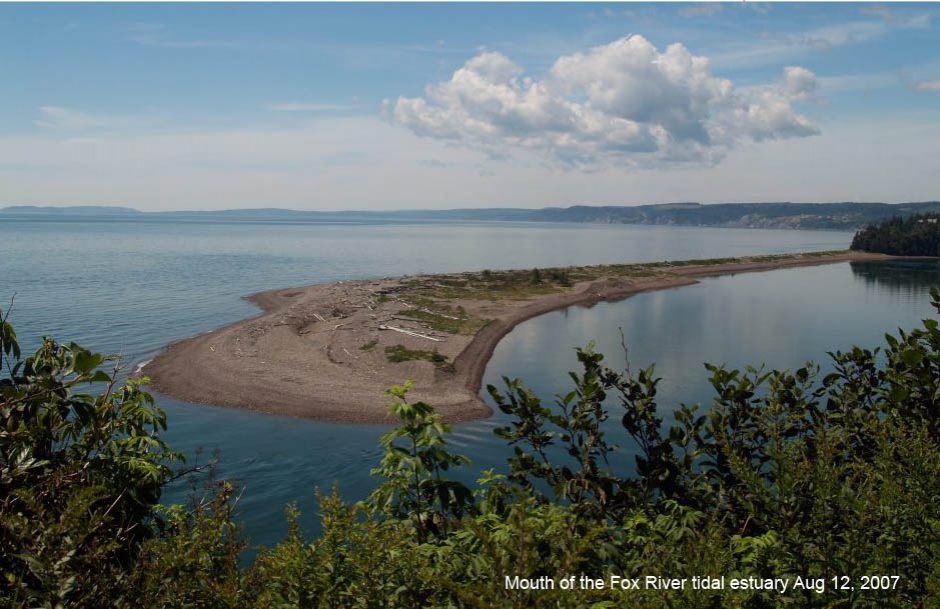We saw the “End of an Era” Conrad Byers told me during one of our many conversations about our experiences growing up in the town of Parrsboro, Nova Scotia in the 1940s and 50s.
Of course at the time we were only partially aware that our world on the Parrsboro Shore was in some way changing. Although nearly every man we knew had gone to sea on sailing ships and the remains of a few of these vessels could be found abandoned along the shore. Conrad and I had only a mild awareness that the world we had been born into was not the same as the one our parents and our friends parents had grown up in.
In fact both of my grandfathers had gone to sea for a few years and my grandfather Kerr had been shipwrecked three times and miraculously survived.
My grandfather Canning died before I was born and so I did not get to hear his stories. The few things that were still operating during the 1940s and 50s were steam powered sawmills and a sustainable form of lumbering called horse logging. My interest in history is diverse and the historical material I write reflects the knowledge and perceptions I learned while growing up in a world that was rapidly passing into history.
There is a common theme running through many of the stories about my experiences, as well as that of Conrad Byers, while growing up in a coastal town on the shores of Nova Scotia’s Bay of Fundy. So many times we witnessed the last time something was done by an individual or an organization.
The experience is nicely illustrated in the following poem which begins with the line “I saw the last-three master on the morn she put to sea”:
The Last Three-master
I saw the last three-master on the morn she put to sea,
As she laid with lumber cargo at Halifax-number three
It was a mild day in December; the year was forty-six
As I watched the dawn awaken and light and darkness mix,
The dawn cast fleeting shadows as it lit the eastern sky,
That stretches back through the ages that passed so swiftly by,
Of sails upon the ocean since man first fought the gale,
Alas, I saw the last one, the last to use all sail,
I saw the spars in silhouette as the sun came over the hill,
As a boy I saw them forest-like and in fancy see them still,
At day-break on the ocean as the sun shone on each wave,
Where some of them have long since gone to fill an ocean grave,
I look on this lone schooner, the last of a mighty fleet,
The pride of every Bluesnose, her lines so trim and neat,
A poets dream in woodwork, these beauties of the past,
How sad the words to sailors, of sailing ships, the last.
This poem, written in 1946 by an unknown passerby, describes the three-masted schooner Frederick P. Elkin (formerly the Seaman A.O.) built in 1919 on the Parrsboro Shore as she was preparing for her last trip from her native province of Nova Scotia. The schooner sailed to the West Indies and sold to a local West Indies company and after a few inter-island trips the Frederick P. Elkin was sold for scrap in 1949.
The poem was taken from Stanley T. Spicer’s book “Sails of Fundy: The Schooners and Square-riggers of the Parrsboro Shore” (1984).
———

My logs ready to be sawed at the Hanna Family traditional sawmill located in Lakelands, Cumberland County north of Parrsboro, N.S.
My education can best be described as having two components. The first was informal through a variety of experiences that took place during the summer months and winter weekends of the 1950’s and early sixties when I worked in my father’s building and lumbering business.
Then, there was my more formal education when I studied physics at three universities and later taught physics at John Abbott College in Ste. Anne de Bellevue on Montreal’s West Island from 1973 to my retirement in 2004.
Both provided experiences and opportunities where I learned many important concepts applicable to my research in the history of the technology.
All the while I returned regularly to the Parrsboro shore, building my own heavy timber frame cottage – the timber milled from trees harvested from the family woodlot – and pursuing my research. I also got married and raised a family!
A few years ago I was asked by a lady who was a few grades ahead of me in the Parrsboro School if my wife came from “up the line”. I had not heard term for a long time but I instinctively said yes because I knew what she was asking. An interesting explanation for those not familiar with this no longer used localism involves another section of this site called the Road to Cumberland. My wife came from “up the line” where she grew up on a section of the Road to Cumberland called the Boars Back Road. The name comes from a long narrow ridge formed when the ice retreated from the last ice age.
We have two daughters, one living in Nova Scotia and the other in Ontario. And we are doing our best to make them and a grandaughter aware of their Parrsboro Shore heritage.
– Kerr Canning

